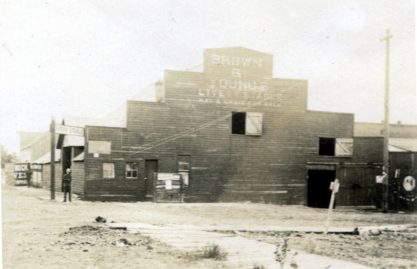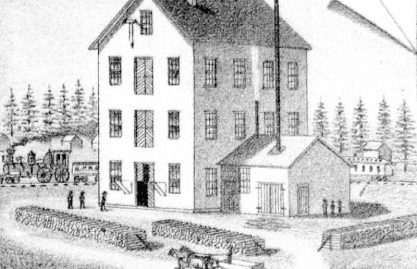From County Seat, business and agricultural hub to college town. The only incorporated city in our district.

A spring bubbled up from the ground and fed a year-round pond at the base of a group of hills in Section 13, seventeen miles southwest of Spokane, twenty-three miles northeast of Sprague. It was the highest point on the surveyed route for the Northern Pacific Railway line between the Idaho border and the Ainsworth (near today’s Tri-Cities) Columbia River crossing. It was a natural place for the railroad to locate a section station.

There were already homesteaders both north and south of what would become the town of Cheney. In 1869, Thomas Philleo was located to the south near the lake that bears his name. Daniel F. Percival homesteaded along Rock Creek in 1872. William Cramer drove his herd of cattle into the region in 1874. In 1877, the G.W. Cook arrived to homestead just north of Cheney.
In 1877, new settlers arrived at Section 13, among them Joseph Chambers’ family. The following year, Charles Carreau built the St Charles Hotel, Isaac Ballinger and his wife camped at the top of the hill. Ballinger had hauled the first load of freight to the emerging township. Steven Harris set up a blacksmith shop.
By the end of 1878, the settlers started their first school on a hill in a log building dubbed Fort Crunk with 16-year-old Mary Cook walking over from her father’s homestead to teach the handful of students.

Businessmen saw great potential in the township with its abundant spring water and pine forests, at the rim of the Columbia Basin and the rich Palouse farm country. With enthusiasm and industry, they began organizing for a bright future.
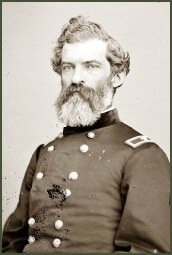
In 1880, General John W. Sprague, district Superintendent of the Northern Pacific Railroad, was quoted in the Palouse Gazette newspaper saying that the railroad was locating a town site on Section 13 to be named Cheney, a location formerly known as Billings, which had locally been known as Big Springs, Depot Springs, and less commonly as Willow Springs. Naming towns after railroad company officers was a common practice of the period and Benjamin Pierce Cheney was a major stockholder and a director of the Northern Pacific Railway Company. The plat of Cheney was laid out parallel to the rail line rather than the compass.
In 1881, the businessmen of Cheney embarked on one of the most enduring projects for the town, establishing an educational institution. They asked Mr. Cheney for support, and flattered by his namesake town, he gave $10,000 and influenced the railroad to give over eight acres of land to start the Benjamin P. Cheney Academy. It opened 3 April 1882.
Cheney incorporated as a city in 1883, the same year that Mr. Cheney and his wife, Elizabeth, made their only visit to the town and academy.
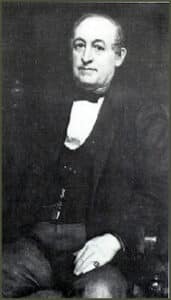
Grover Chambers claimed he was the first child born in the newly incorporated city in 1883. He later was the head of the Cheney Water Department.
Spokane won back the county seat in 1886, and Cheney pinned its dreams on agriculture and education, winning designation as Washington’s first State Normal School 23 March 1890.
Those early years of the school were rocky. Twice the school burned to the ground, and three times Washington governors vetoed funding for the school. But each time the citizens, teachers, and students fought back to keep the school operating and to overcoming government skeptics.
The third Normal School opened May 1915 and was later renamed Showalter Hall after Noah D. Showalter.

The Cheney School District set up its own school in 1887 with William J. Sutton as principal. Mr. Sutton was a charismatic speaker and beloved teacher. He became principal of the Normal School in 1892 and was one of its most ferocious advocates.
Through consolidation with other school districts, the Cheney Public School District grew to be the largest geographic district in the state in 1960.
The early town of Cheney endured its trials when major fires nearly swept the town away in 1883, 1889, and 1890. Cheney has been home to many kinds of business, a few have endured, but most have vanished. In the early 1880s the Bavaria Brewery in Cheney distributed its product throughout eastern Washington and the Coeur d’Alene mining district. It closed in 1910 when the town voted to go dry. The Cummins brothers opened the first flour mill at Cheney in 1880, however, it closed in 1900.
There were a number of early creameries that processed and sold milk and cheese. Fred Reuter opened the Cheney Cheese Factory just south of town in 1903. In that period, one-third of the cheese made in Washington came from his factory.
Local men, Kyle and Cleve Wolfe, invented and patented the Rotary Rod Weeder, a farm tillage implement. The Cheney Weeder Company was established in 1912 to manufacture it. The company operated here until the mid-1950s shipping weeders all over the globe.
In 1907, Frank and son, Clarence Martin opened a grain, milling and storage business in Cheney. The original wooden mill structure burned to the ground in a spectacular fire in 1918 while the concrete and brick mill just to its west was under construction. The Martin family sold the business to Nabisco in 1943. Today, the 1918 buildings are still visible as part of the ADM mill in downtown Cheney.
The Cheney Branch of the Washington Water Power electric train was completed in 1907. The electric train line came out from Spokane across the west plains and branched off from the line to Medical Lake near Hayford Road, then traveled south through Four Lakes along a route near today’s highway. Coming into Cheney along 2nd Street, the train turned down D Street, then west on 1st to College Ave, up College to turn right again on 2nd and stop at the depot at 505 2nd Street.

The 2-car train carried both freight and passengers on four regular daily round trips to Spokane, taking 55 minutes to travel the 19.5-mile route. Automobiles and improved roads made the freight and passenger business of the electric train unprofitable and the electric line to Cheney was discontinued in 1922.

Clarence D. Martin, son of mill owner F.M. Martin, was born and went to school in Cheney, graduating from the Normal School in 1903.
He became Washington’s first native born governor. Between 1932 and 1936 Mr. Martin served as both Mayor of Cheney (1928 – 1936) and Washington’s Governor (1933 – 1940), commuting between Cheney and Olympia by train. Among his many accomplishments as governor, Martin was instrumental in getting state and federal commitment to the Grand Coulee Dam project.
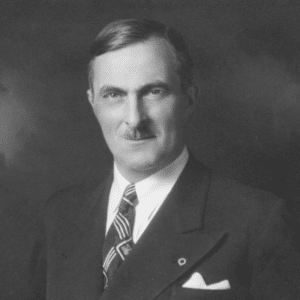
From the 1920s into the 1960s Cheney was located on the main east-west state highway and was the business and agricultural hub for the surrounding area. At one time there were 13 gas stations, a movie theater, three motels, a hardware store, a farm implement business, three car dealerships, a department store, jeweler, two pharmacies, two dry cleaners, three grocery stores, a clothing store and several restaurants serving the region. When the I–90 freeway by-passed the town in 1965, the struggle began against the easy access to the goods and services of the much larger Spokane.

Today, Cheney is the largest community, and only incorporated town, of our district with Eastern Washington University and the Cheney Public Schools as anchor.
Joan Mamanakis





